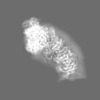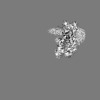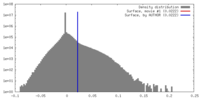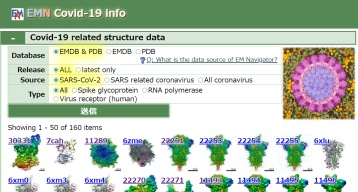+ Open data
Open data
- Basic information
Basic information
| Entry | Database: EMDB / ID: EMD-31650 | |||||||||
|---|---|---|---|---|---|---|---|---|---|---|
| Title | Deactive state complex I from rotenone dataset | |||||||||
 Map data Map data | ||||||||||
 Sample Sample |
| |||||||||
| Function / homology |  Function and homology information Function and homology informationMitochondrial protein import / RHOG GTPase cycle / Complex I biogenesis / : / Respiratory electron transport / Mitochondrial protein degradation / Neutrophil degranulation / mesenchymal stem cell proliferation / reproductive system development / mesenchymal stem cell differentiation ...Mitochondrial protein import / RHOG GTPase cycle / Complex I biogenesis / : / Respiratory electron transport / Mitochondrial protein degradation / Neutrophil degranulation / mesenchymal stem cell proliferation / reproductive system development / mesenchymal stem cell differentiation / circulatory system development / cardiac muscle tissue development / oxidoreductase activity, acting on NAD(P)H / stem cell division / NADH:ubiquinone reductase (H+-translocating) / mitochondrial respiratory chain complex I assembly / mitochondrial electron transport, NADH to ubiquinone / respiratory chain complex I / NADH dehydrogenase (ubiquinone) activity / quinone binding / ATP synthesis coupled electron transport / reactive oxygen species metabolic process / muscle contraction / aerobic respiration / regulation of mitochondrial membrane potential / respiratory electron transport chain / DNA damage response, signal transduction by p53 class mediator / kidney development / electron transport chain / fatty acid metabolic process / mitochondrial intermembrane space / 2 iron, 2 sulfur cluster binding / mitochondrial membrane / multicellular organism growth / NAD binding / fatty acid biosynthetic process / cellular senescence / FMN binding / nervous system development / 4 iron, 4 sulfur cluster binding / gene expression / mitochondrial inner membrane / nuclear speck / nuclear body / mitochondrial matrix / mitochondrion / nucleoplasm / metal ion binding / membrane Similarity search - Function | |||||||||
| Biological species |  | |||||||||
| Method | single particle reconstruction / cryo EM / Resolution: 2.9 Å | |||||||||
 Authors Authors | Gu JK / Yang MJ | |||||||||
| Funding support |  China, 2 items China, 2 items
| |||||||||
 Citation Citation |  Journal: Nat Struct Mol Biol / Year: 2022 Journal: Nat Struct Mol Biol / Year: 2022Title: The coupling mechanism of mammalian mitochondrial complex I. Authors: Jinke Gu / Tianya Liu / Runyu Guo / Laixing Zhang / Maojun Yang /  Abstract: Mammalian respiratory complex I (CI) is a 45-subunit, redox-driven proton pump that generates an electrochemical gradient across the mitochondrial inner membrane to power ATP synthesis in ...Mammalian respiratory complex I (CI) is a 45-subunit, redox-driven proton pump that generates an electrochemical gradient across the mitochondrial inner membrane to power ATP synthesis in mitochondria. In the present study, we report cryo-electron microscopy structures of CI from Sus scrofa in six treatment conditions at a resolution of 2.4-3.5 Å, in which CI structures of each condition can be classified into two biochemical classes (active or deactive), with a notably higher proportion of active CI particles. These structures illuminate how hydrophobic ubiquinone-10 (Q10) with its long isoprenoid tail is bound and reduced in a narrow Q chamber comprising four different Q10-binding sites. Structural comparisons of active CI structures from our decylubiquinone-NADH and rotenone-NADH datasets reveal that Q10 reduction at site 1 is not coupled to proton pumping in the membrane arm, which might instead be coupled to Q10 oxidation at site 2. Our data overturn the widely accepted previous proposal about the coupling mechanism of CI. | |||||||||
| History |
|
- Structure visualization
Structure visualization
| Movie |
 Movie viewer Movie viewer |
|---|---|
| Structure viewer | EM map:  SurfView SurfView Molmil Molmil Jmol/JSmol Jmol/JSmol |
| Supplemental images |
- Downloads & links
Downloads & links
-EMDB archive
| Map data |  emd_31650.map.gz emd_31650.map.gz | 14.9 MB |  EMDB map data format EMDB map data format | |
|---|---|---|---|---|
| Header (meta data) |  emd-31650-v30.xml emd-31650-v30.xml emd-31650.xml emd-31650.xml | 7.6 KB 7.6 KB | Display Display |  EMDB header EMDB header |
| Images |  emd_31650.png emd_31650.png | 126.7 KB | ||
| Archive directory |  http://ftp.pdbj.org/pub/emdb/structures/EMD-31650 http://ftp.pdbj.org/pub/emdb/structures/EMD-31650 ftp://ftp.pdbj.org/pub/emdb/structures/EMD-31650 ftp://ftp.pdbj.org/pub/emdb/structures/EMD-31650 | HTTPS FTP |
-Validation report
| Summary document |  emd_31650_validation.pdf.gz emd_31650_validation.pdf.gz | 333.8 KB | Display |  EMDB validaton report EMDB validaton report |
|---|---|---|---|---|
| Full document |  emd_31650_full_validation.pdf.gz emd_31650_full_validation.pdf.gz | 333.4 KB | Display | |
| Data in XML |  emd_31650_validation.xml.gz emd_31650_validation.xml.gz | 6.4 KB | Display | |
| Data in CIF |  emd_31650_validation.cif.gz emd_31650_validation.cif.gz | 7.3 KB | Display | |
| Arichive directory |  https://ftp.pdbj.org/pub/emdb/validation_reports/EMD-31650 https://ftp.pdbj.org/pub/emdb/validation_reports/EMD-31650 ftp://ftp.pdbj.org/pub/emdb/validation_reports/EMD-31650 ftp://ftp.pdbj.org/pub/emdb/validation_reports/EMD-31650 | HTTPS FTP |
-Related structure data
| Related structure data | 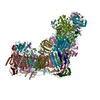 7v32MC  7v2cC  7v2dC  7v2eC  7v2fC  7v2hC  7v2kC  7v2rC  7v30C  7v31C  7v33C  7v3mC 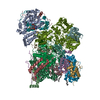 7vb7C 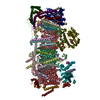 7vblC 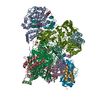 7vbnC 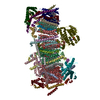 7vbpC 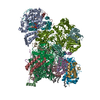 7vbzC 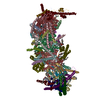 7vc0C 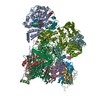 7vwjC 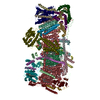 7vwlC 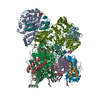 7vxpC 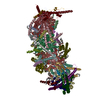 7vxsC 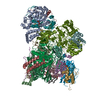 7vxuC 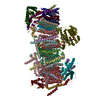 7vy1C 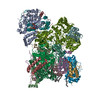 7vy8C 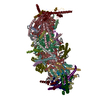 7vy9C 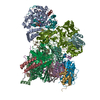 7vyaC 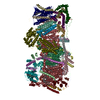 7vyeC 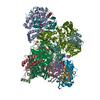 7vyfC 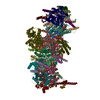 7vygC 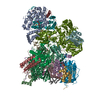 7vyhC  7vyiC 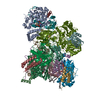 7vynC 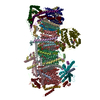 7vysC 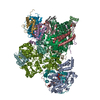 7vz1C 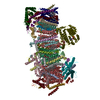 7vz8C 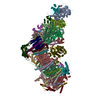 7vzvC 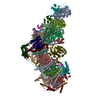 7vzwC 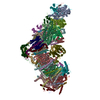 7w00C 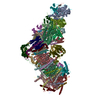 7w0hC 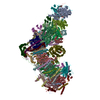 7w0rC 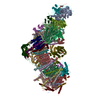 7w0yC 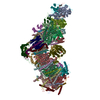 7w1oC  7w1pC 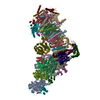 7w1tC 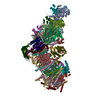 7w1uC 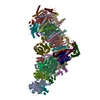 7w1vC 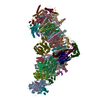 7w1zC 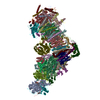 7w20C 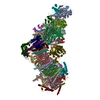 7w2kC 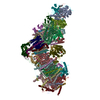 7w2lC 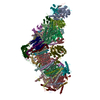 7w2rC 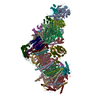 7w2uC 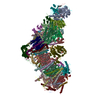 7w2yC 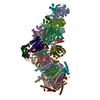 7w31C 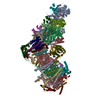 7w32C 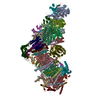 7w35C 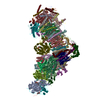 7w4cC 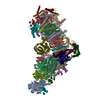 7w4dC 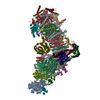 7w4eC 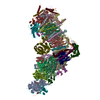 7w4fC 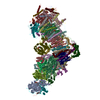 7w4gC 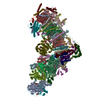 7w4jC 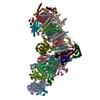 7w4kC 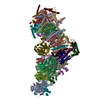 7w4lC 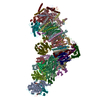 7w4mC 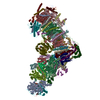 7w4nC 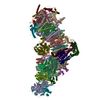 7w4qC M: atomic model generated by this map C: citing same article ( |
|---|---|
| Similar structure data |
- Links
Links
| EMDB pages |  EMDB (EBI/PDBe) / EMDB (EBI/PDBe) /  EMDataResource EMDataResource |
|---|---|
| Related items in Molecule of the Month |
- Map
Map
| File |  Download / File: emd_31650.map.gz / Format: CCP4 / Size: 113.6 MB / Type: IMAGE STORED AS FLOATING POINT NUMBER (4 BYTES) Download / File: emd_31650.map.gz / Format: CCP4 / Size: 113.6 MB / Type: IMAGE STORED AS FLOATING POINT NUMBER (4 BYTES) | ||||||||||||||||||||||||||||||||||||||||||||||||||||||||||||||||||||
|---|---|---|---|---|---|---|---|---|---|---|---|---|---|---|---|---|---|---|---|---|---|---|---|---|---|---|---|---|---|---|---|---|---|---|---|---|---|---|---|---|---|---|---|---|---|---|---|---|---|---|---|---|---|---|---|---|---|---|---|---|---|---|---|---|---|---|---|---|---|
| Projections & slices | Image control
Images are generated by Spider. | ||||||||||||||||||||||||||||||||||||||||||||||||||||||||||||||||||||
| Voxel size | X=Y=Z: 1.0742 Å | ||||||||||||||||||||||||||||||||||||||||||||||||||||||||||||||||||||
| Density |
| ||||||||||||||||||||||||||||||||||||||||||||||||||||||||||||||||||||
| Symmetry | Space group: 1 | ||||||||||||||||||||||||||||||||||||||||||||||||||||||||||||||||||||
| Details | EMDB XML:
CCP4 map header:
| ||||||||||||||||||||||||||||||||||||||||||||||||||||||||||||||||||||
-Supplemental data
- Sample components
Sample components
-Entire : Respiratory complex I
| Entire | Name: Respiratory complex I |
|---|---|
| Components |
|
-Supramolecule #1: Respiratory complex I
| Supramolecule | Name: Respiratory complex I / type: complex / ID: 1 / Parent: 0 |
|---|---|
| Source (natural) | Organism:  |
-Experimental details
-Structure determination
| Method | cryo EM |
|---|---|
 Processing Processing | single particle reconstruction |
| Aggregation state | particle |
- Sample preparation
Sample preparation
| Buffer | pH: 7.5 |
|---|---|
| Vitrification | Cryogen name: ETHANE |
- Electron microscopy
Electron microscopy
| Microscope | FEI TITAN KRIOS |
|---|---|
| Image recording | Film or detector model: GATAN K3 (6k x 4k) / Average electron dose: 50.0 e/Å2 |
| Electron beam | Acceleration voltage: 300 kV / Electron source:  FIELD EMISSION GUN FIELD EMISSION GUN |
| Electron optics | Illumination mode: FLOOD BEAM / Imaging mode: BRIGHT FIELD |
| Experimental equipment | 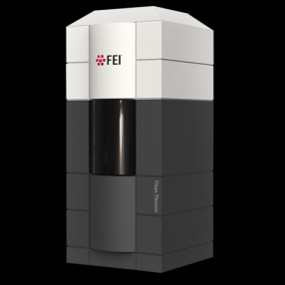 Model: Titan Krios / Image courtesy: FEI Company |
- Image processing
Image processing
| Final reconstruction | Resolution.type: BY AUTHOR / Resolution: 2.9 Å / Resolution method: FSC 0.143 CUT-OFF / Number images used: 63623 |
|---|---|
| Initial angle assignment | Type: RANDOM ASSIGNMENT |
| Final angle assignment | Type: RANDOM ASSIGNMENT |
 Movie
Movie Controller
Controller




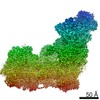










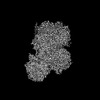
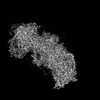























































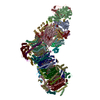

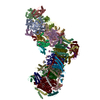


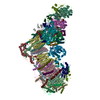
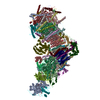
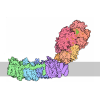

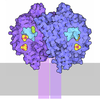


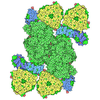


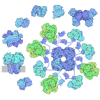

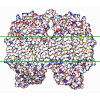

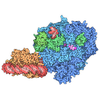
 Z (Sec.)
Z (Sec.) Y (Row.)
Y (Row.) X (Col.)
X (Col.)




